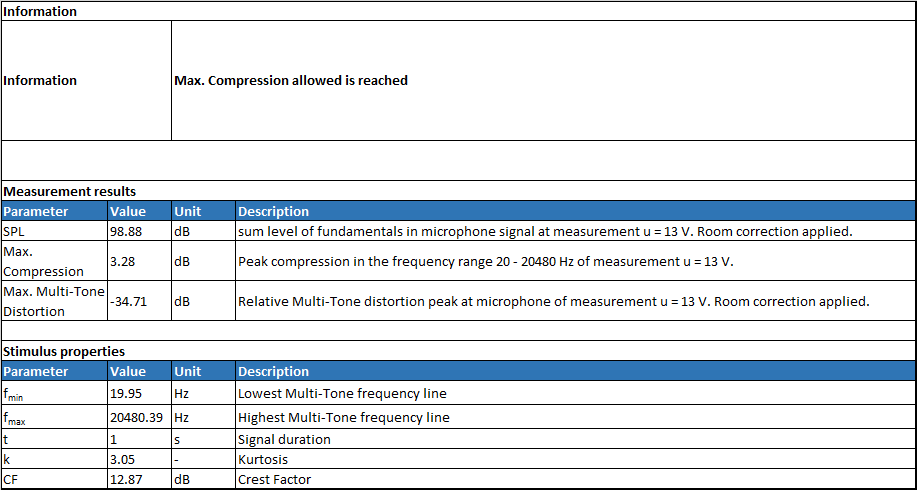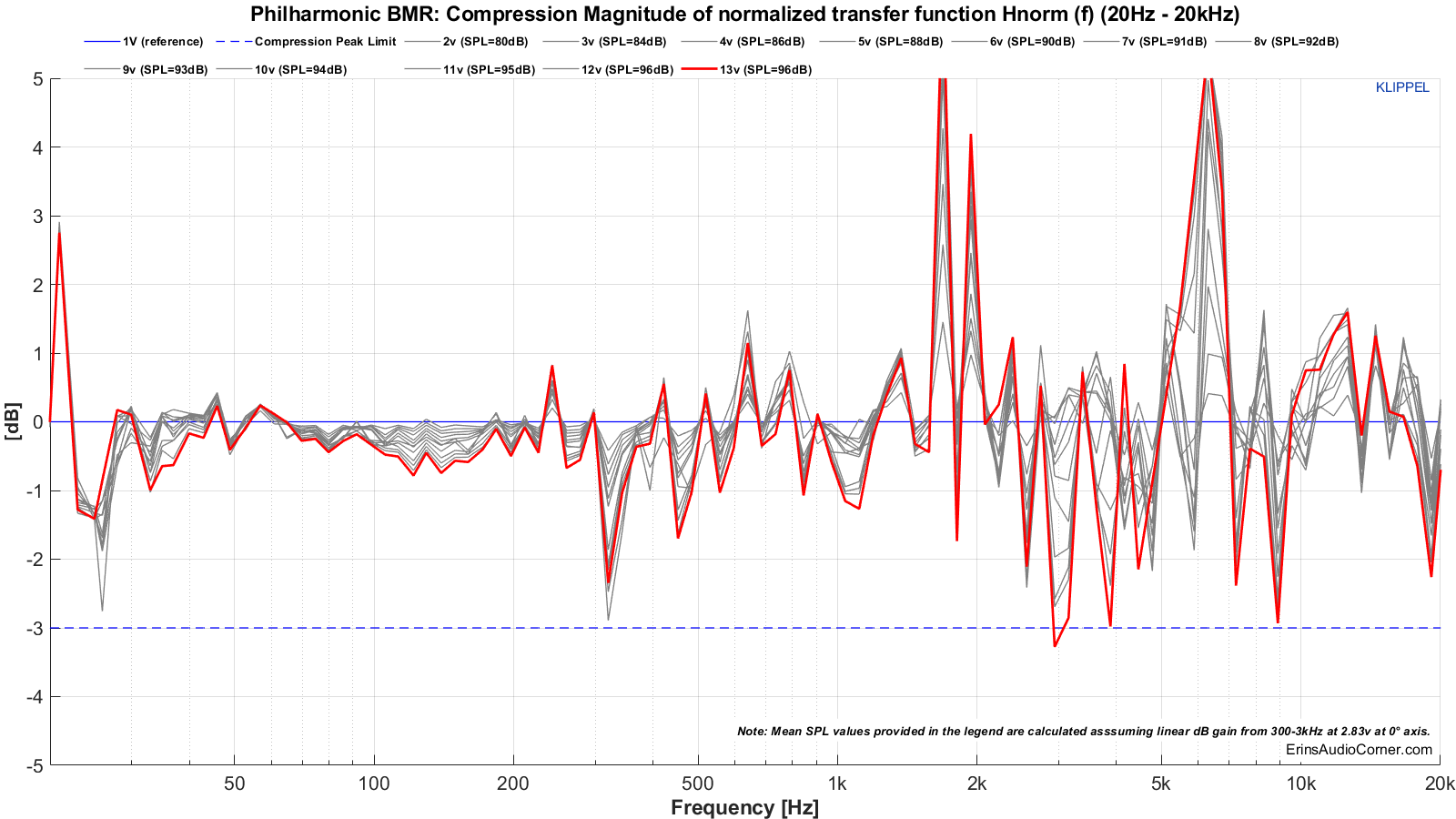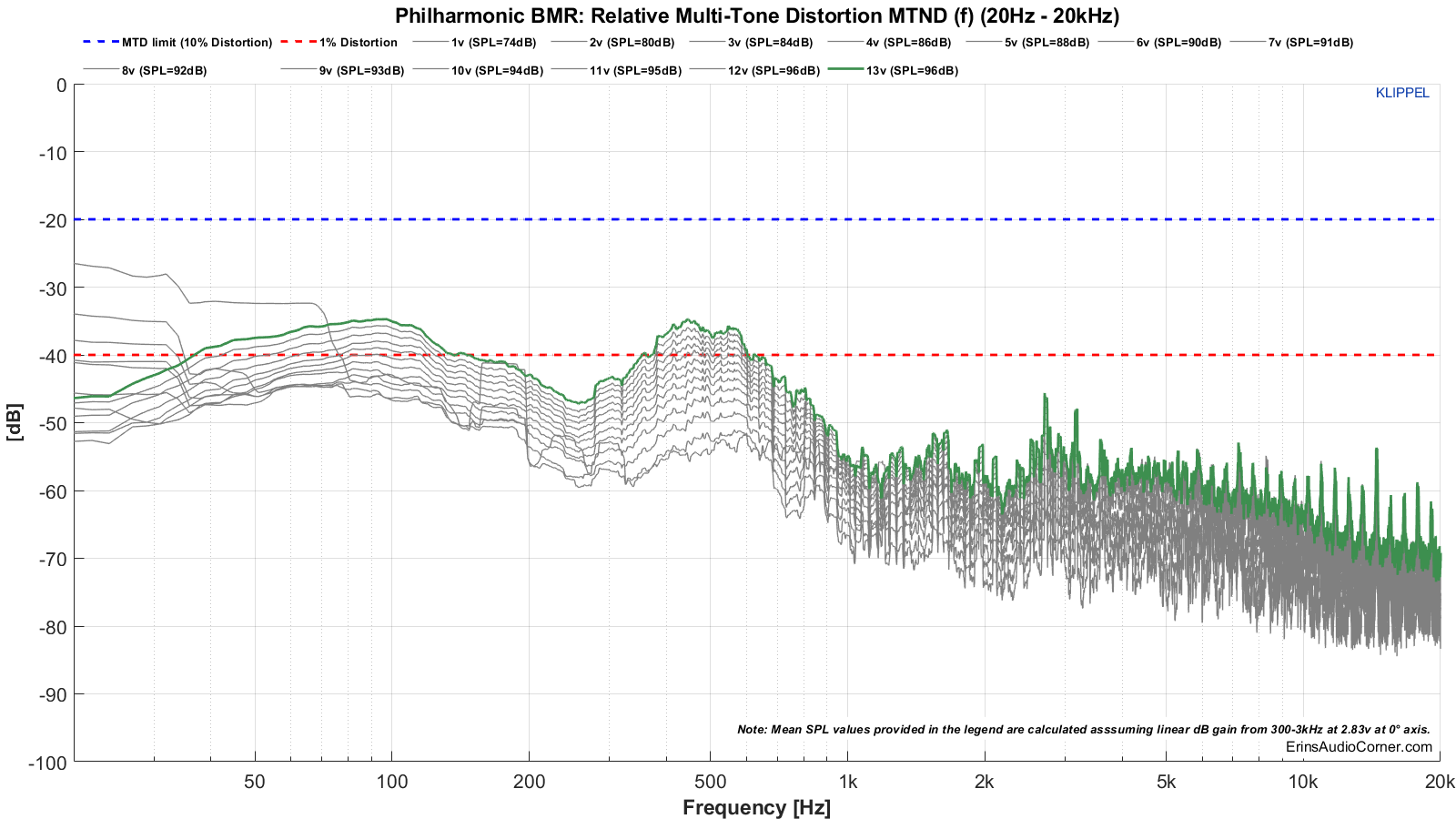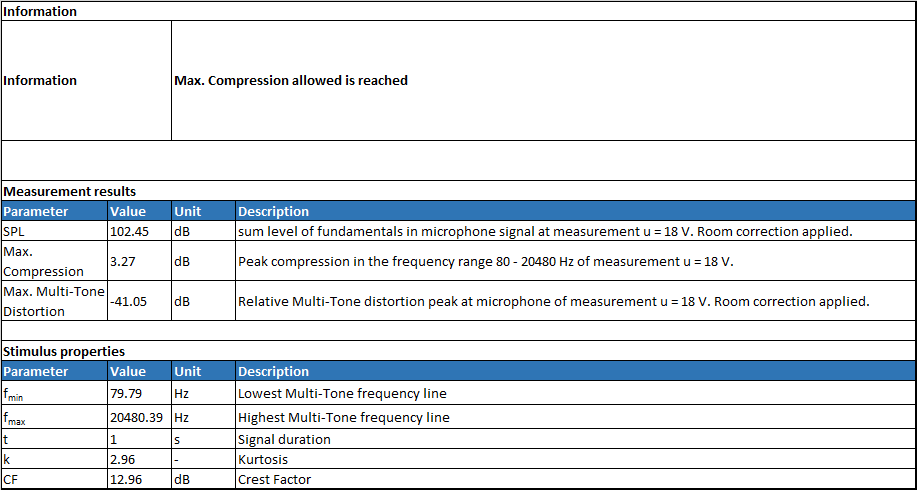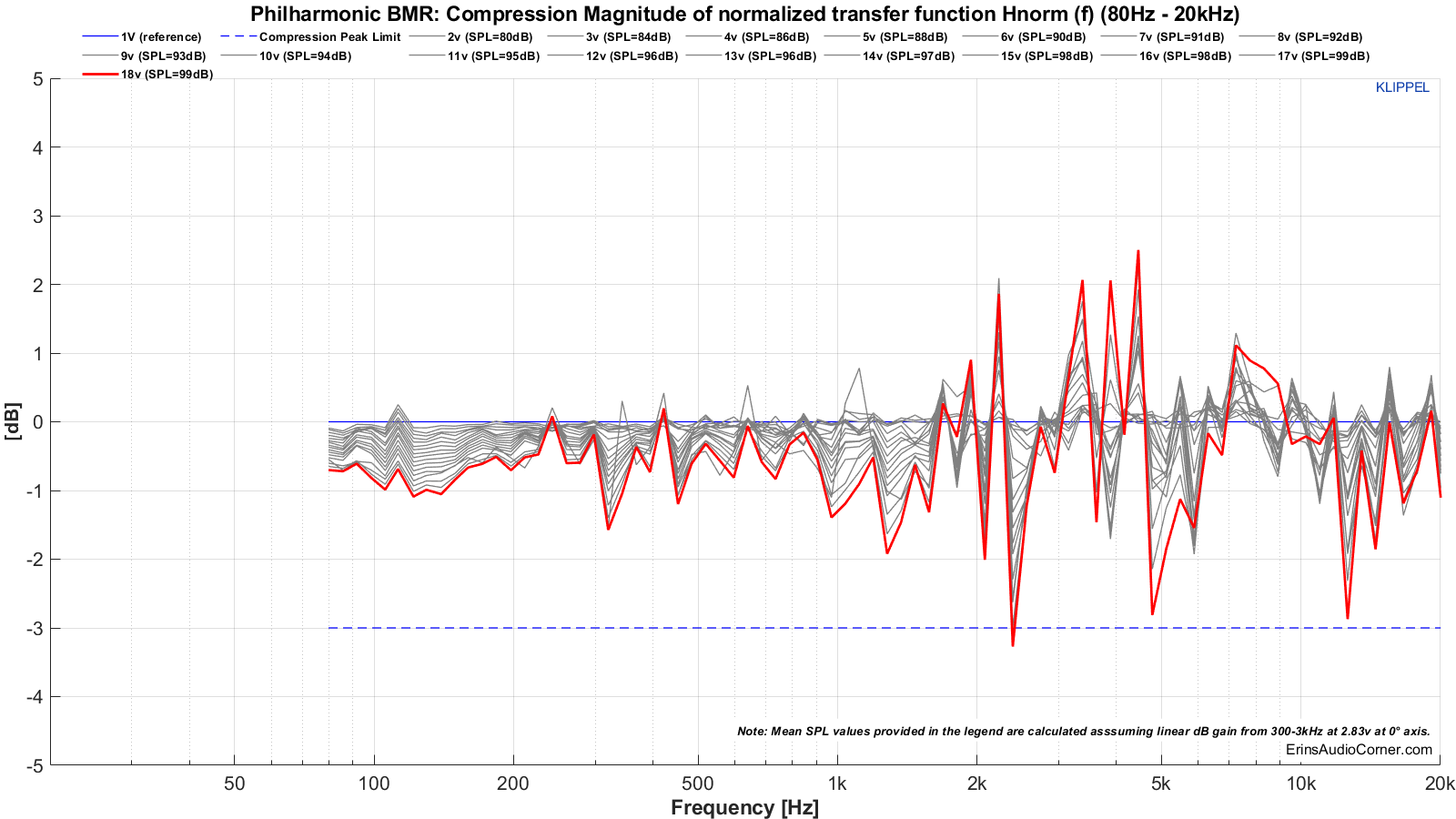Here is a small analysis why the radiation of the loudspeaker looks like what it looks like.
I have simulated a very simple model of the loudspeaker. For this purpose the
ideally behaving driver cones were simply placed flat on the baffle, the dimensions of the drivers should be roughly correct - the ribbon tweeter is 1cm too short (had measured wrong), but this should only have a vertical effect.
To save computing time, a depth of only 20cm was set for the loudspeaker cabinet - thus the simulation to low frequencies (<600-800Hz) is not quite correct. At about 10Khz the simulation is also no longer reliable (again to save computing time).
First we look at the horizontal normalized frequency response of the midrange driver - which in the Phil BMR has its crossover frequency at 3kHz.
It is clearly to see that the midrange driver radiates somewhat narrower between 1-2kHz and in the range 2-4kHz it radiates much wider due to the edge diffraction (interaction with the baffle) - related to the normalized 0° frequency response.
If we only look at the midrange driver, a crossover frequency of 2kHz would be appropriate to avoid broadening in the radiation. But of course we also have to look at the radiation pattern of the tweeter - again normalized to the 0° frequency response:
You can immediately see that the edge diffraction is more dramatic for the tweeter. Even between 5-8kHz the edge diffraction is still clearly noticeable.
So of course it makes no sense to choose the crossover frequency as low as possible e. g. 2kHz (even if the ribbon tweeter would be able to do so), because otherwise the effect of edge diffraction would be even more pronounced.
Let's put it all together and look at what the simulation predicts at a crossover frequency of 3kHz with LR4:
This results for the horizontal radiation of the loudspeaker normalized to 0°:
It is easy to see, for example, that the 60° frequency response increases steadily in sound pressure from 1.5kHz onwards and that from 2.3kHz onwards it has a higher sound pressure than the midrange.
In order that the loudspeaker does not sound too bright at a short distance from a side wall, the axis frequency response would have to be corrected accordingly to compensate for the increase at the different angles.
But in the end the only problem is just on axis and 10 degree, if no toe in the dispersion is excellent and should be praised.
I don't think I made myself clear.
The dispersion is very even, but at an angle the sound pressure of the tweeter is up to 70° clearly above that of the midrange, which could lead to the said bright sound at a small distance to a side wall, since the LW and axis frequency response are rather flat.
In large rooms and at normal volume this tuning ensures a high level of detail - it's always a compromise.


